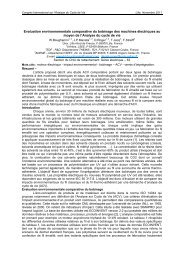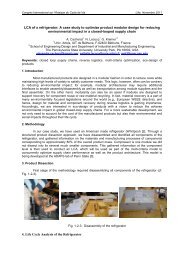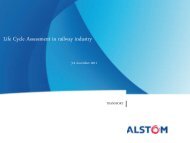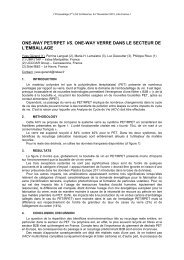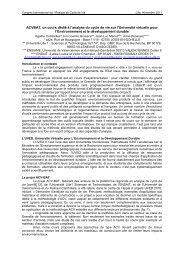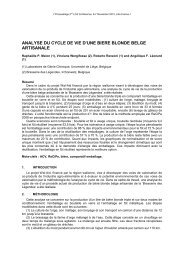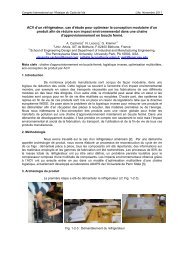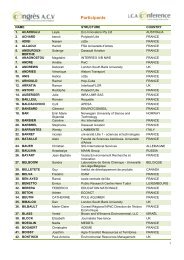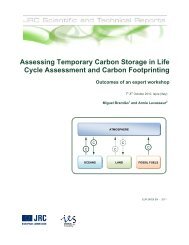Untitled - avniR
Untitled - avniR
Untitled - avniR
You also want an ePaper? Increase the reach of your titles
YUMPU automatically turns print PDFs into web optimized ePapers that Google loves.
Congrès International sur l’Analyse du Cycle de Vie Lille, Novembre 2011<br />
Case study: Simplified LCA as a design tool for developing fish processing machinery<br />
The simplified LCA study as a tool to identify environmental hotspots was used in the early phase<br />
of a PD process of new fish processing machinery. The study was conducted by one member of the<br />
design team who had previous experience with LCA and a background in mechanical engineering. The<br />
inventory analysis was based upon similar existing machinery with the same function as the intended new<br />
product being developed. The work was done in parallel with the PD process, and the results were<br />
communicated back to the team. There were no external driver for the use of design for environment<br />
methods or tools, and no formal requirements of environmental performance that the new machinery had<br />
to comply with apart from the CE approval.<br />
Findings<br />
In this case study, the need to understand contextual aspects in order to develop and implement<br />
useful design tools based upon LCA methodology became clear. Although the use of a simplified LCA<br />
showed promising results, the lack of external drivers for eco design made it harder to justify the use of<br />
resources within this area in the PD process. The case study concludes that environmental agitators and<br />
trained designers need to be the drivers of design for environment methodology and LCA based design<br />
tools, by proving and communicating the benefits from using such tools in practice. To avoid this becoming<br />
an uphill battle, environmental agitators in a design group need to be both legitimate and credible. The<br />
empowerment and integration of environmental agitators in a design group need to be done seamlessly<br />
with the knowledge and information shared throughout the whole product development process to gain the<br />
most benefit from the utilized methods and tools, to ensure system thinking and avoid end of pipe<br />
solutions.<br />
References<br />
[1] D. Millet, L. Bistagnino, C. Lanzavecchia, R. Camous, and T. Poldma, “Does the potential of the<br />
use of LCA match the design team needs?,” Journal of Cleaner Production, vol. 15, no. 4, pp. 335-346,<br />
2007.<br />
[2] R. Karlsson and C. Luttropp, “EcoDesign: what’s happening? An overview of the subject area of<br />
EcoDesign and of the papers in this special issue,” Journal of Cleaner Production, vol. 14, no. 15-16, pp.<br />
1291-1298, 2006.<br />
- 104 -



